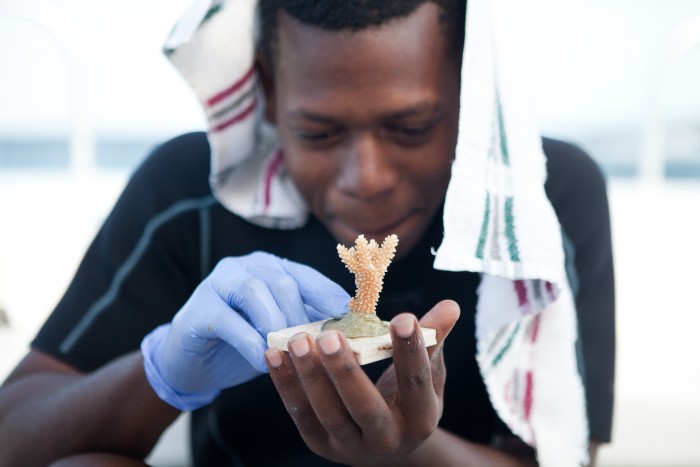
The boom of the world’s industries during the past half century has brought insurmountable advances to civilisation and design. But overfishing, water pollution and climate change in the same span of time have caused huge damage to the coral reefs around the globe. Our impact on the underwater world is causing destruction at a much faster rate than the reefs can recover from on their own.
In nature, coral reefs form gradually using calcium carbonate stone as a foundation. These skeletal stones are incredibly porous and the countless nooks and crannies in their surface provide the perfect opportunity for tiny polyps to take root.
Thousands of these polyps growing together form the tissue-like organisms we know as a coral reef. At the best of times, these underwater outcrops grow at around an inch per year and it is not uncommon for some specimens to grow at an inch per century. The minuscule creatures form the basis for huge marine ecosystems as coral reefs attract fish and other animals to make their homes.
A non-profit science organisation is investigating ways to give these important organisms a boost in life with synthetic coral scaffolding printed in a laboratory. Researchers at the Fabien Cousteau Ocean Learning Center have installed artificial coral structures off the coast of Bonaire, a small island in the Caribbean, to test the rehabilitation of slow growing coral over the next few years. Thanks to frightening levels of precision and its ability to synthesise solid structures from different ingredients, 3D-printing appears to be the best route in aiding these marine dwellings.
Legendary ocean explorer and documentary filmmaker Jacques Cousteau devoted his career to educate the public about life in the deep blue and marine conservation. His grandson, Fabien, is continuing the legacy by exploring ways in which modern 3D-printing can bolster the speed at which corals grow.
Cousteau and his team have designed a tile (no larger than the palm of your hand) that can be stacked in tower formations, tethered to the seafloor or merged with existing reef ledges. The 3D-printed structure is made of the same material that occurs in nature, calcium carbonate, to give the polyps the best chance possible of latching on and proliferating.
Speaking with Popular Mechanics, Cousteau describes the non-invasive nature of this project and that installing synthetic stone structures on the seafloor simply provides a much-needed boost in real estate for polyps to grow.
"The idea is to give a leg up and give all the advantages to the natural ecosystem. Nature is very resilient if you give it a chance, he says, “We're experimenting with building coral out of what coral is made of. Nature does things better than we could ever imagine doing. Why not use that lesson in creating a coral structure?"
More on how design is impacting our oceans:
Big blue: Three designs that tackle problems of the ocean
Scientists design liquid barrier to protect coral reefs from UV damage






